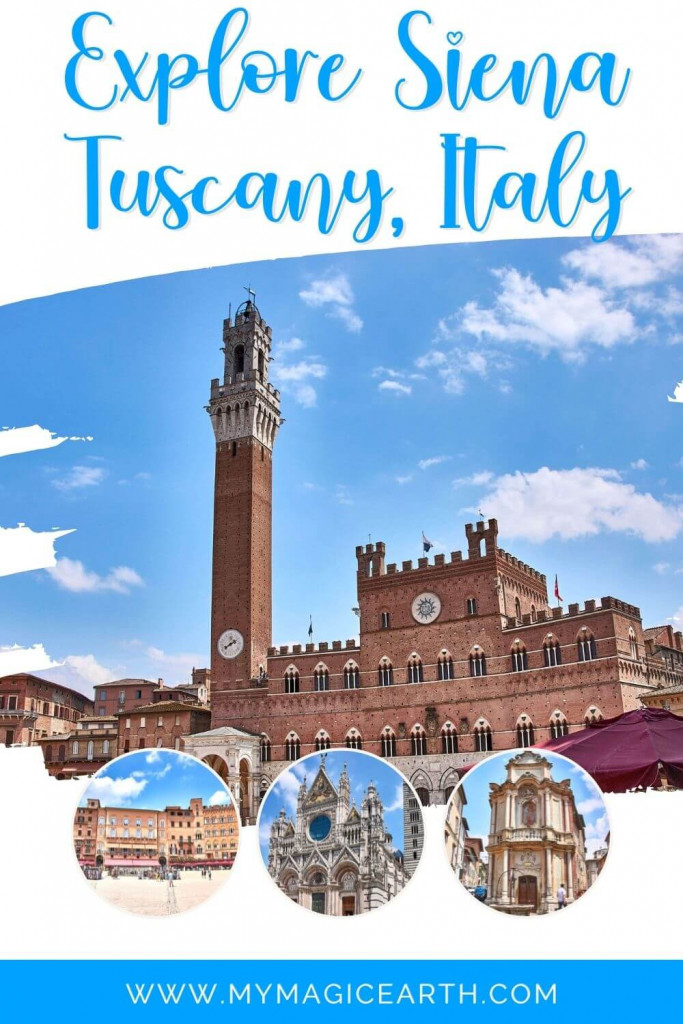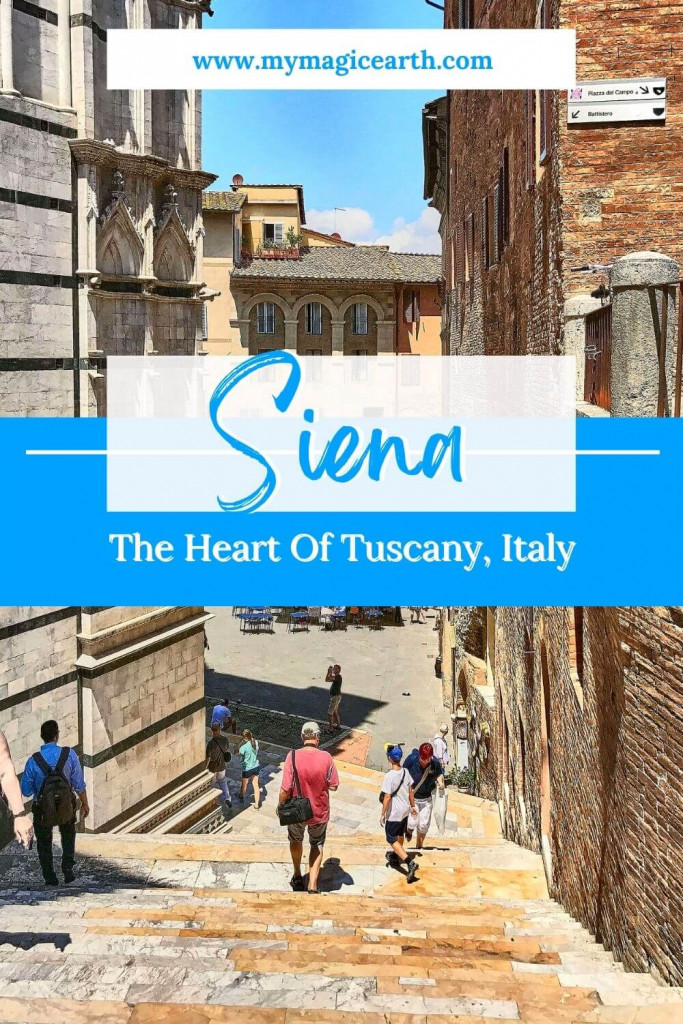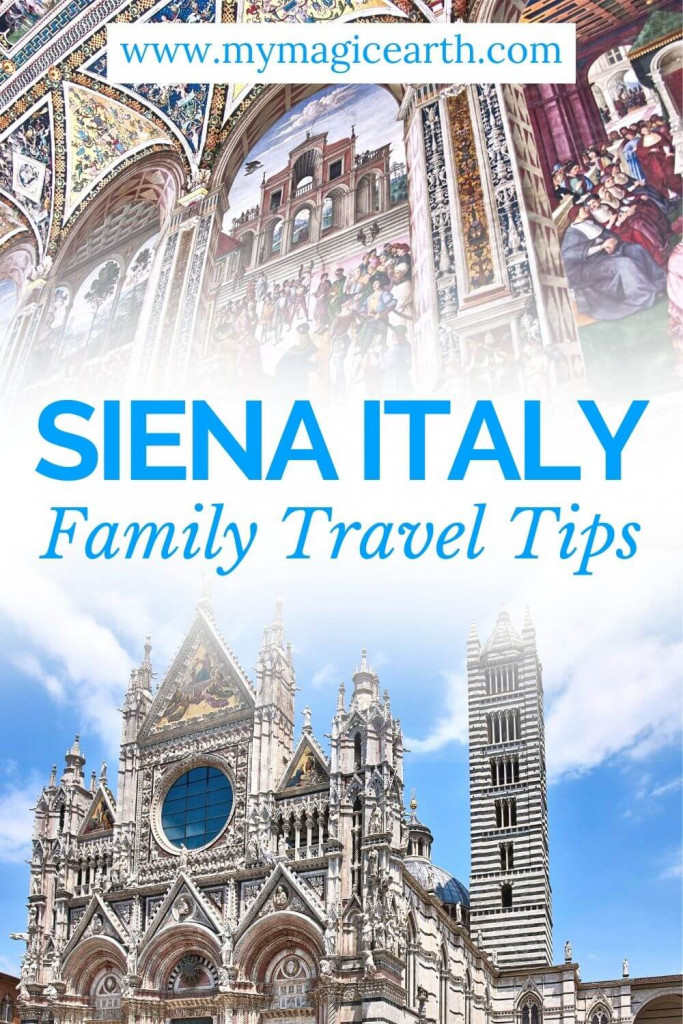Located in the heart of Tuscany, Siena played an important role in history as a commercial and banking city until Florence surpassed it in the 13th–14th century. Today, though, Siena essentially remains a medieval town, preserving its original character.
Since Siena is only a 20-minute drive from Monteriggioni, we visited both places in one day during our Tuscany summer trip. Its unique medieval brick buildings, the Gothic town hall, the shell-shaped Piazza del Campo, and the Torre del Mangia all presented us with a visual history. Most sites are within the city walls and gates, and all the places we visited are spread across three areas.
- Cappella della Madonna del Rosario
- Duomo complex and surrounding buildings
- Piazza del Campo, the shell-shaped square
Capella della Madonna del Rosario
We parked outside the medieval town and walked along Via S. Marco street. The first site we saw was Cappella della Madonna del Rosario.
Built by the Chiocciola family between 1655 and 1656, the chapel was restored and extended between 1722 and 1725 with money from winning a Palio. The formerly Catholic chapel was deconsecrated in 1820 and then abandoned by the Chiocciola family. Recently, locals use it to shelter horses during the Palio, the annual horse race event.
Walking towards the centre, along Via del Capitano, we saw the 13th-century Gothic-style Palazzo del Capitano del Popolo. Finally, we arrived at the Duomo Complex in the heart of Siena.
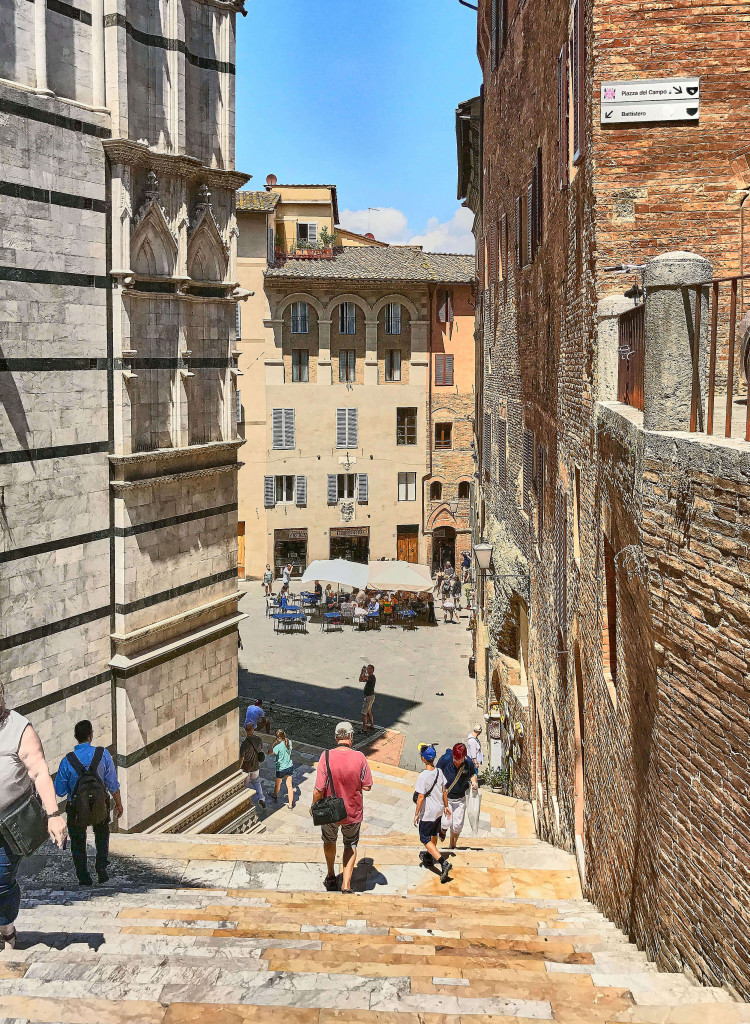
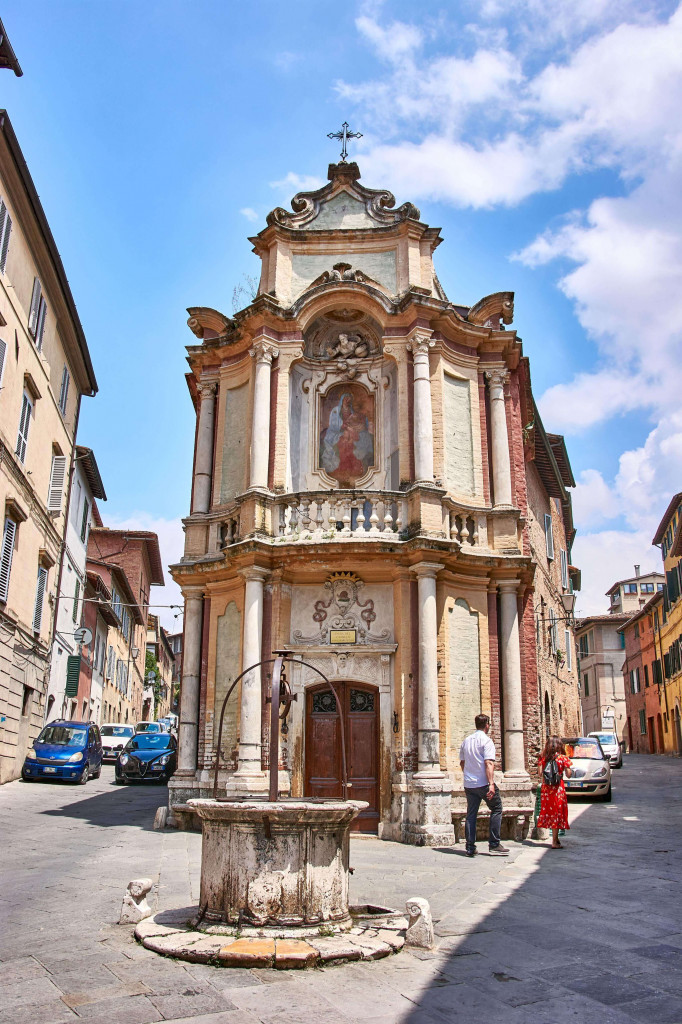
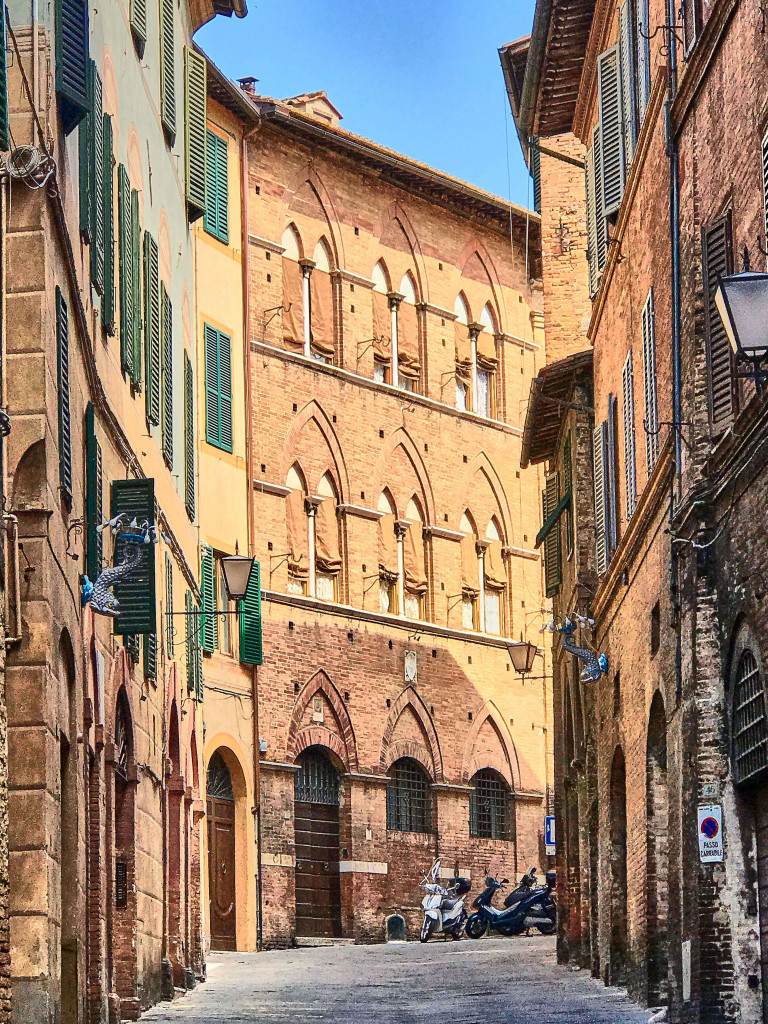
Duomo Complex and the surrounding buildings
The Duomo Complex is a beautiful place you cannot miss in the town. It’s an extraordinary museum of Italian sculpture, filled with numerous sites and treasures. This Gothic wonder in Tuscany overflows with art and history.
Duomo
The Duomo looked stunning in the Tuscany sun. Its mostly white façade had dark green and white marble stripes. To avoid missing any spots, we followed arrows on the ground.
The floor decorated with marble mosaics stood out in my memory. Different techniques used over time created a dynamic contrast of light and dark, with scenes that felt modern and impressionistic.
Piccolomini Library inside the Duomo honours Pinturicchio’s maternal uncle, Aeneas Silvius Piccolomini (Pope Pius II). The frescoes on three walls depict scenes from the Life of Pope Pius II. The library also houses a rich collection of books and manuscripts from the Pope.
Another notable part is the Piccolomini Altar, with four sculptures in the lower niches designed by the young Michelangelo. On top of the altar are the Madonna and Child. It is a truly remarkable piece of art.
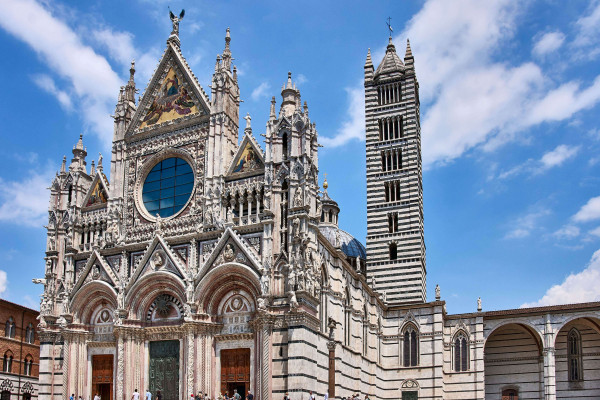
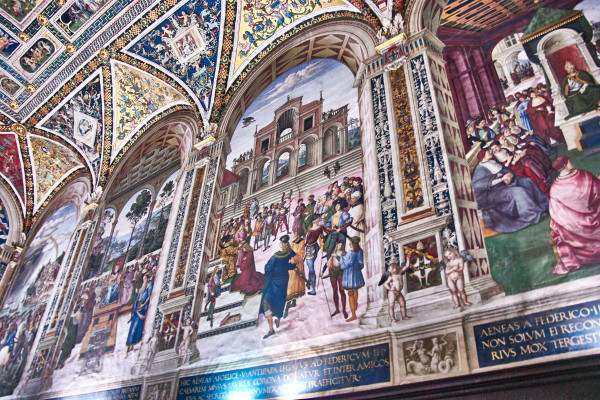
Buildings next to the Duomo
The Battistero di San Giovanni is near the final spans of the choir of the Duomo di Siena. Nearby is the Museo dell’Opera, housing many art pieces from the Duomo. The museum hosts an outstanding collection of artifacts, including religious art, sculptures, and stained glass.
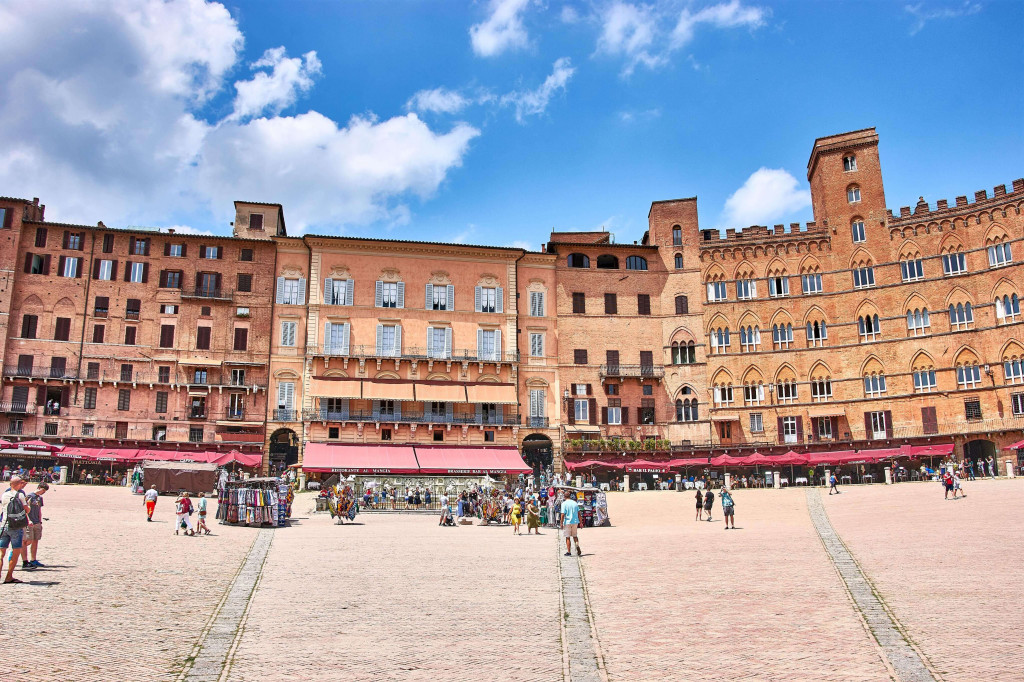
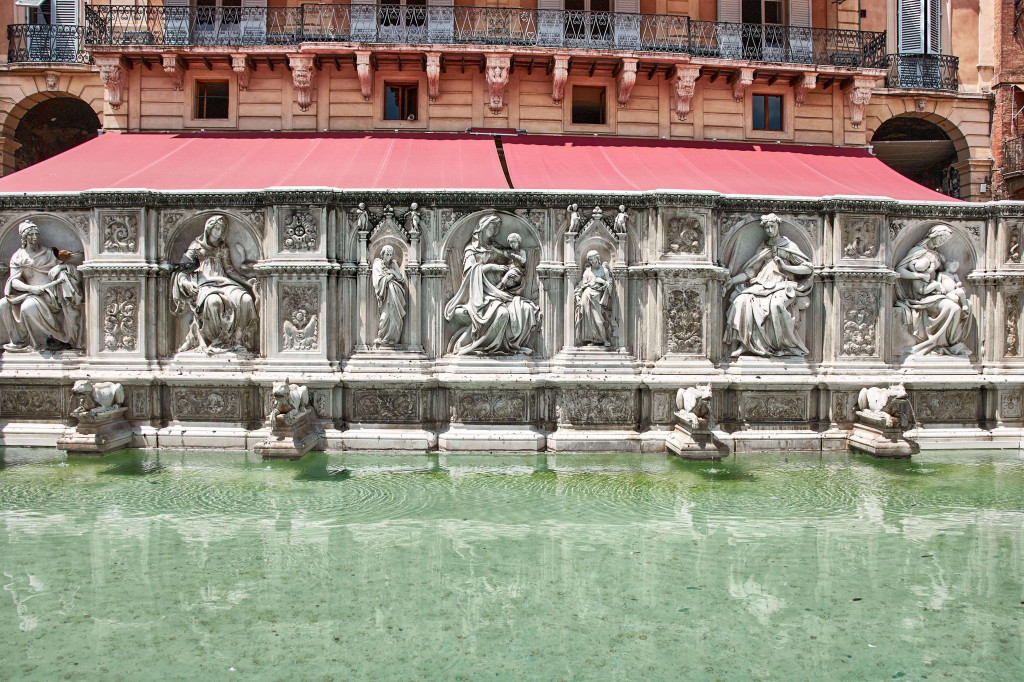
Piazza del Campo, the shell-shaped square
The shell-shaped square is the focus of Siena’s civic life. Historically, Piazza del Campo hosted markets and events, like the famous Palio. Its distinctive feature is the red brick paving, arranged in a fishbone style and divided into a sunburst pattern. When we visited, it was two days after the Palio. The soil used to protect the bricks during the race still covered the square.
Fonte Gaia, the engineering miracle of Siena
Fonte Gaia was a massive hydraulic work, bringing water to the city’s highpoint via a long tunnel. It was the most influential public fountain.
Upon completing this engineering marvel, Jacopo della Quercia, a Sienese Renaissance master, decorated it with sculptures depicting themes from the Old Testament. His original works, now badly damaged, are in the Santa Maria della Scala Museum. The sculptures on display today are copies.
Torre del Mangia, the red Palazzo Pubblico, and Museo Civico
From afar, we saw Torre del Mangia rising from Piazza del Campo. Visitors could climb over 500 steps to enjoy views of Siena and its surroundings. The red Palazzo Pubblico, a Gothic town hall, stands nearby. Next to Palazzo Pubblico is the Museo Civico, showcasing some of the greatest Sienese paintings.
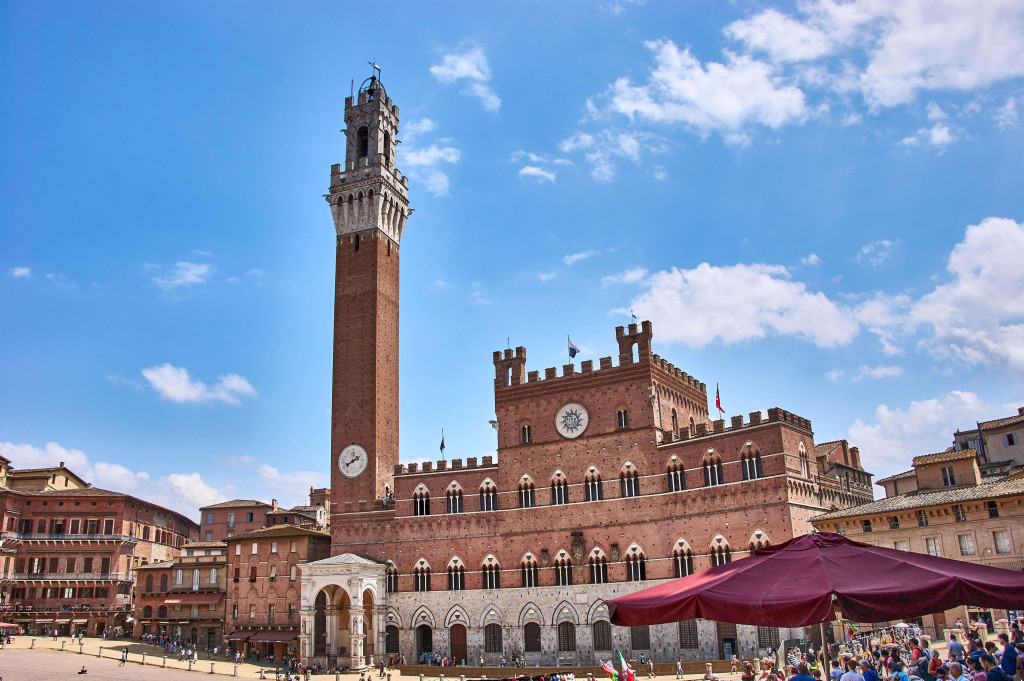
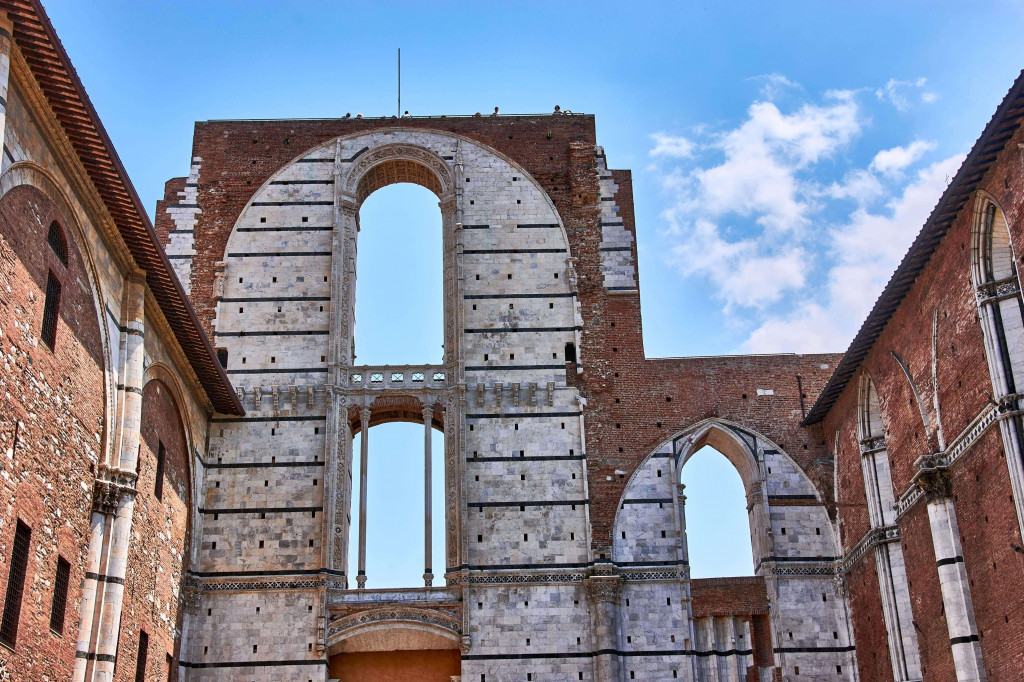
Travel tips
Explore the back streets behind the square
The back streets behind the square are intriguing. We took our time strolling around and visiting the shops along the way. I could spend hours seeking Sienese specialties like gourmet pasta, vintage Chianti, boar prosciutto, or extra virgin olive oil. In short, Siena offers Italy’s best medieval city experience.
Where to stay
- Grand Hotel Continental Siena (luxury level)
- NH Siena (middle range)
- Palazzo Ravizza (Budget level)
Suggested tours
How to get there
From Florence, the fast bus (Rapida) to Siena takes about 1:15, while the ordinary bus (Ordinaria) takes around 1:30.
However, when travelling with small children, the train from Florence is more comfortable as there’s more space for the stroller and children to walk around. Two trains per hour run, one direct and one requiring a change at Empoli.
If you take the bus from Pisa, you need to change at Florence. Trains leave approximately twice an hour from the central station to Siena, requiring a change at Empoli. The whole trip lasts about 1 hour and 50 minutes.
